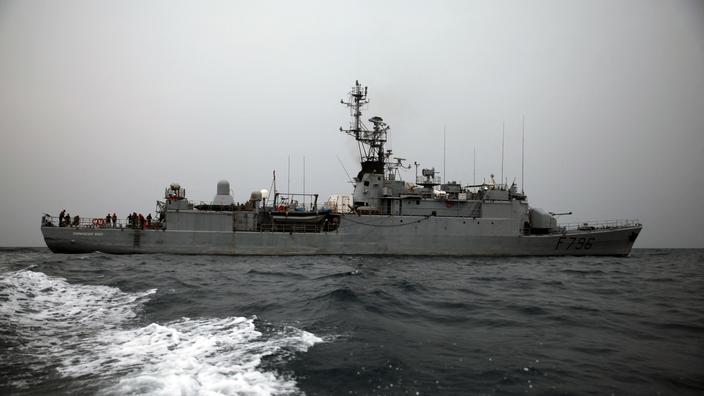"When you enter the Gulf of Guinea, it's a permanent concern"
, assures Commander Pierre Blanchard, president of the French Association of Ship Captains (AFCAN). The area, which covers 3,500,000 square kilometers, is a playground for pirates. For several years, they have been increasing attacks against ships. Their specialty: kidnappings of seafarers for ransoms, generally paid for by shipowners or their insurance companies. Almost 99% of the kidnappings of seafarers worldwide have taken place in the Gulf of Guinea. But in 2021, their number has dropped significantly. The various anti-piracy programs in the region pay off in the end. Attacks fell from 115 to 44, according to the Maritime Information Cooperation and Awareness Center (MICA Center).
Read also The Gulf of Guinea: the "most dangerous sea in the world"
Reinforced patrols
On site, a complex maritime architecture brings together multiple structures and a plurality of players.
The nineteen countries of the Gulf of Guinea signed the Yaoundé agreement in 2013, which lays the foundations for a coordinated regional control strategy.
This architecture came into effect on November 9 during a symposium organized with the French Ministry of the Armed Forces.
Nigeria particularly beefed up its intervention force by mobilizing 1,500 soldiers in November and providing their maritime security unit with three helicopters, sixteen rapid interception ships and two special mission planes.
The coordinated maritime presence (PMC), which ensures the presence of European navies in the area, is superimposed on local initiatives.
Read also The worrying return of pirates in the Gulf of Guinea, the most dangerous maritime area in the world
Nigeria and Togo also have legal arsenals to be able to try pirates.
In July, ten men who hijacked a Chinese ship in 2020 were sentenced to twelve years in prison.
"This verdict sends a strong warning: Nigeria has zero tolerance towards maritime criminals and its institutions,"
said the spokesperson for the Nigerian Navy.
We have specific workouts every month
Pierre Blanchard, President of Afcan
A regional coordination tool still needs to be set up.
For the moment, this role has been held since 2016 by the MICA Center, jointly managed by France and Great Britain, which provides surveillance of the area from Brest.
“When ships enter the area, they can report to our services.
If they are the object of an attack, they dial a unique number and we immediately report to the competent authorities
,
”
explains Eric Jaslin.
Read also Piracy in the Gulf of Guinea: "Faced with this insecurity, we need an international military presence"
Meanwhile, the sailors on board are more and more familiar with the potential attacks.
"We have training every month, where we train to reach the citadel, the fortified place where sailors must take shelter to avoid kidnappings,"
says Pierre Blanchard.
"The ships are also increasingly better armed, with water cannons, cameras, radars ..."
Hackers adapt
The problem is that hackers adapt to different security devices. During the attack on the container ship MV Mozart on January 24, the attackers blew up the citadel gate with explosives and a sailor was killed. While patrols protect the Gulf coasts, they are now attacking offshore. More than 50% of incidents take place more than 40 nautical miles from the coast.
“States and coastal navies have taken measures to limit attacks near the coast,”
confirms Pascaline Odoubourou, founder and editor-in-chief of MaritimAfrica, a site dedicated to the maritime domain in Africa.
"It pushes pirates to change their attack patterns"
in this global epicenter of criminal maritime activities.
Read alsoHow France fights against piracy around the world
If with Operation Atalanta, the European navies had succeeded in overcoming piracy around the Horn of Africa, the situation is much more complicated in the Gulf of Guinea.
“In the Gulf of Aden, all the roads converge in one pipe.
It was easy to set up convoys to escort the ships, ”
says Eric Jaslin.
“The Gulf of Guinea, on the other hand, concentrates five, six main ports between which ships circulate without emerging from the main axes.
It would take ships everywhere to cover the vastness of the area.
All over a surface as large as seven times that of France.

